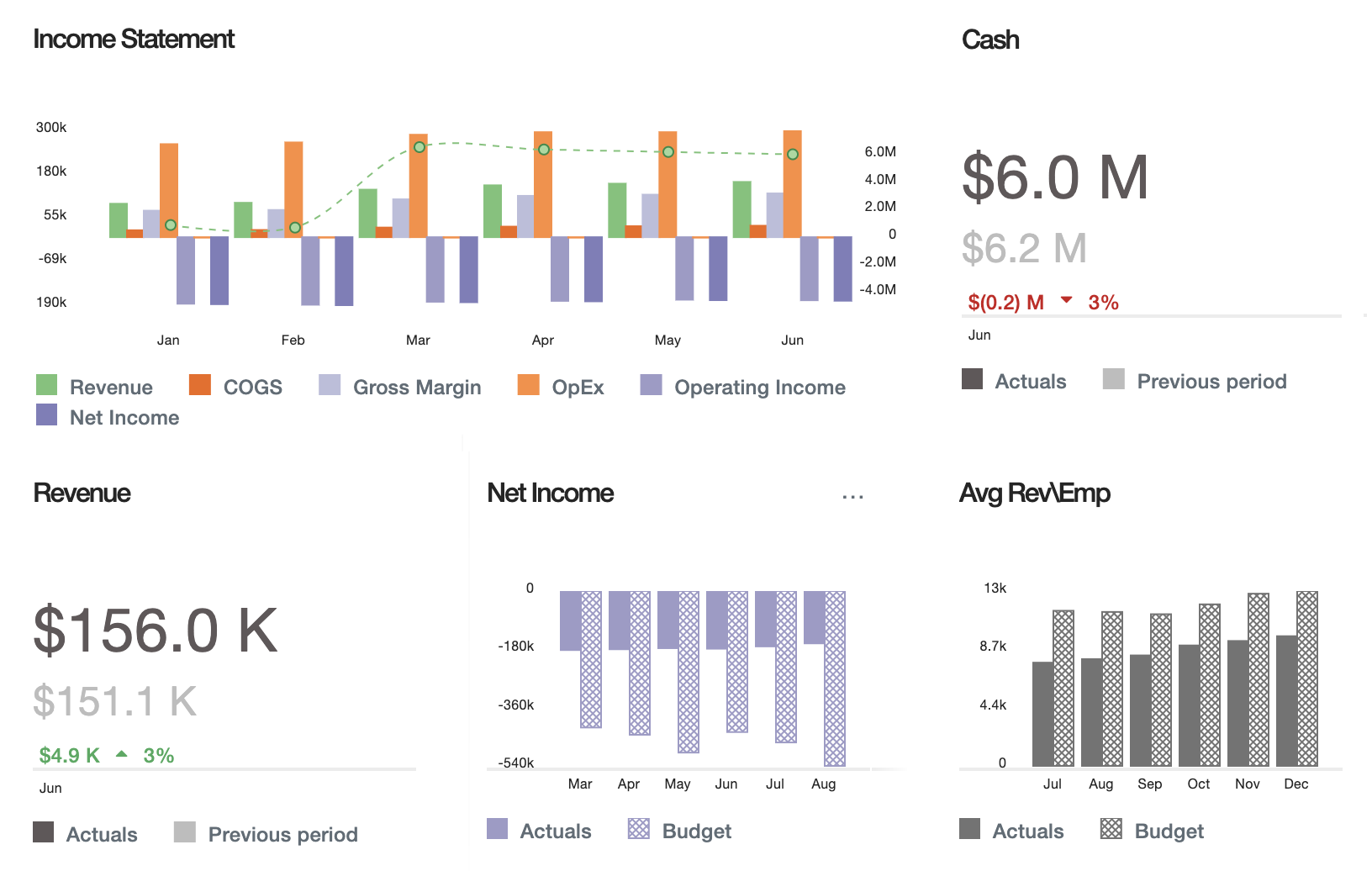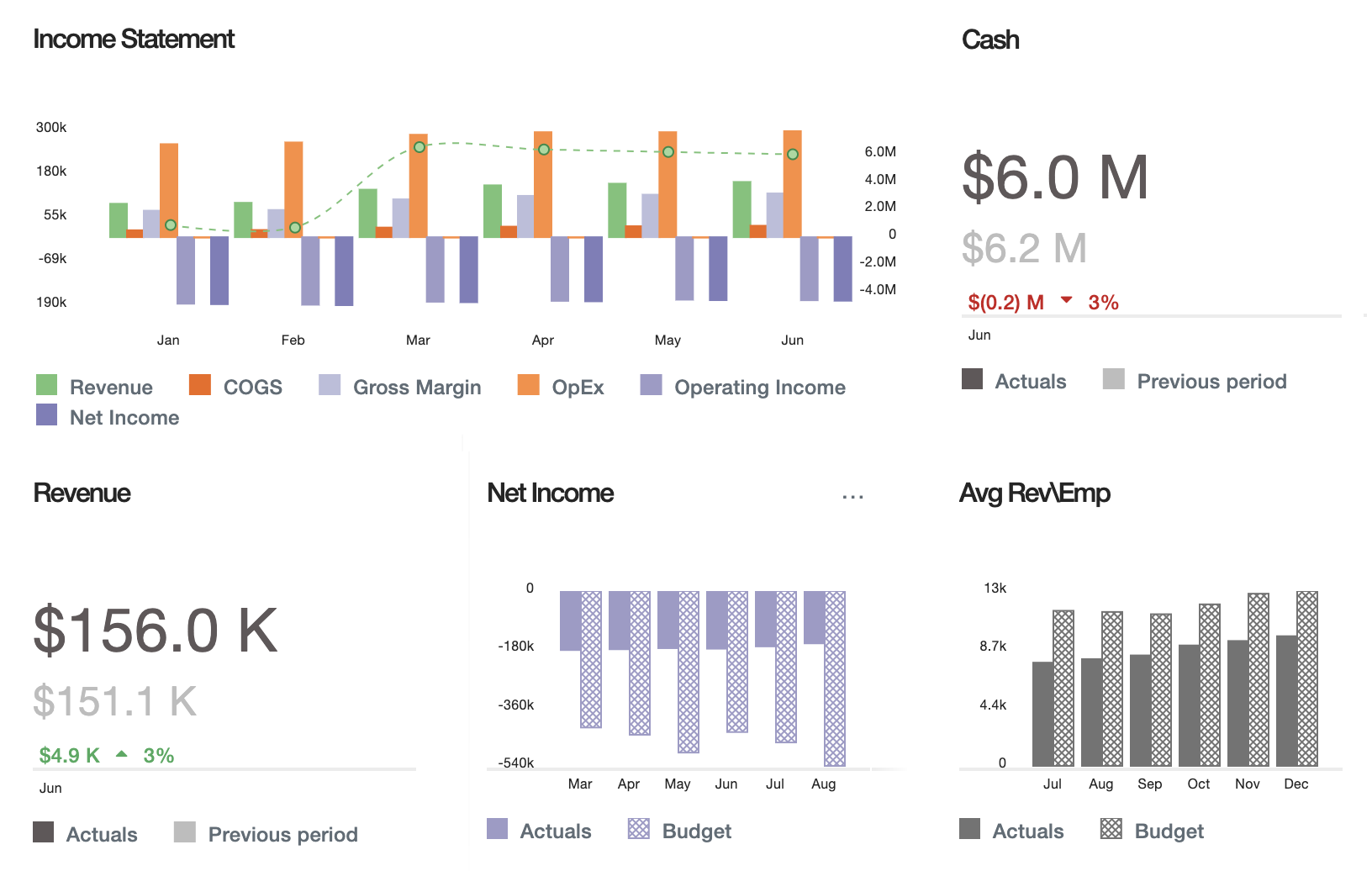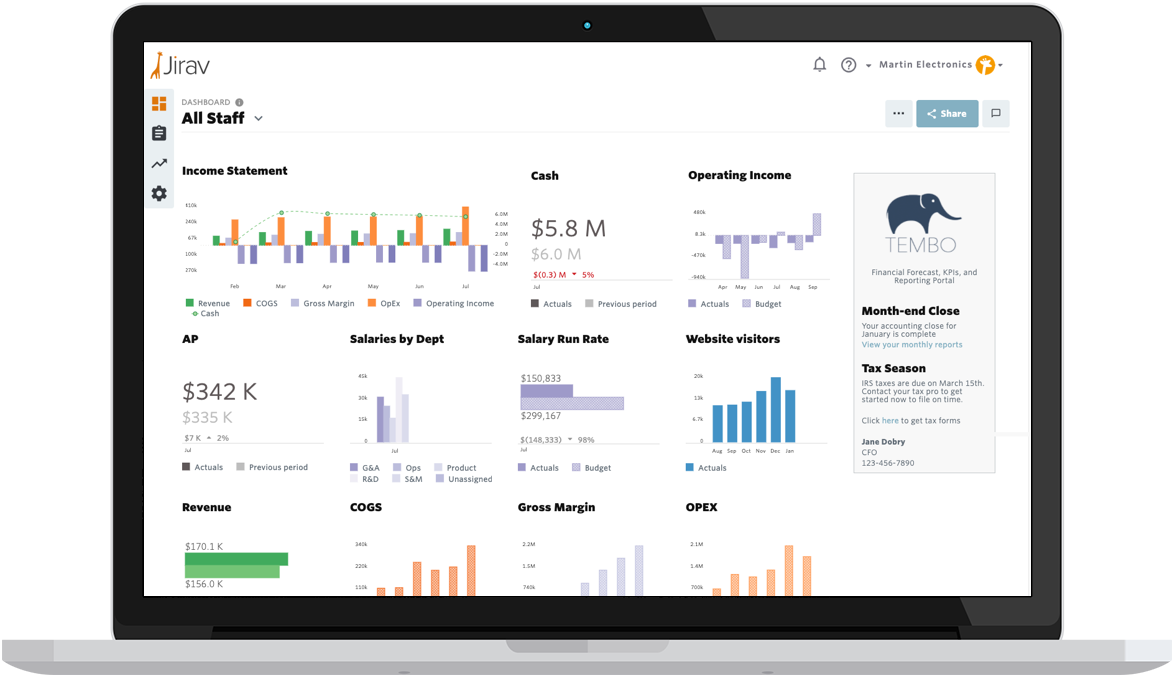You’ve set your goals for 2020, but do you know if you’re on track?
If your business has built out goals for the year, that’s great. But it’s not enough to set goals, work hard, and then check your results at the end of the year. You also need to revisit those goals on at least a quarterly basis.
Companies that revisit goals quarterly see 3x greater performance
According to a study by Deloitte, many teams are creating goals but missing a plan of action for attaining those goals.
“Goal setting is a challenge. Only 51 percent of companies even attempt to develop aligned goals, and, among these, only 6 percent regularly revisit them,” the report states. “Too many companies write down annual goals and only look at them at the end of the year. We found that companies that revisit goals quarterly have threefold greater improvement in performance and retention than those that revisit goals yearly.”
A threefold improvement! That’s massive no matter what industry you’re in. And all you need to do to increase performance by 300% is to check in on your progress on a quarterly basis.
So why aren’t more businesses doing this? Probably because they’re failing to use data to break goals down into measurable activities.
The key is ensuring you and your team are focusing on the right activities. Defining and measuring KPIs is one proven method for ensuring that.
KPIs provide a bridge between goals and activities
Key performance indicators (KPIs) are specific, measurable data points you need to achieve in order to reach your goals.
Any big goal can be broken down into specific actions that must occur for its attainment. KPIs provide clarity and accountability by defining those critical actions.
From the same Deloitte study: “In our review of engagement issues, the first area we found is the importance of simple, clear goals. When people have clearly defined goals that are written down and shared freely, everyone feels more comfortable, and more work gets done. Goals create alignment, clarity, and job satisfaction.”
As an example, consider weight loss. You set a goal to lose 15 pounds. It's a specific, measurable target.
So you start healthy eating, exercise, and you check the scale every week to see how much weight you're losing. And... you aren't making progress.
The goal is clear, but the activities aren't. Instead, what if you broke the goal (lose 15 pounds) into activities, and measured those using KPIs?
Instead of vague concepts like “healthy eating” and “exercise,” you could create a KPI of how many calories you need to consume each week. You would use an app to track your calories and hit the number each week.
Similarly, you could create a workout log with the goal of 30 minutes of exercise four days per week.
Now instead of trying to lose 15 pounds, you're focused on specific, measurable actions. You track your calories, you log the workout. If you hit your KPIs, you’ll eventually achieve the bigger goal.
How to turn goals into KPIs
One of the biggest differences between successful and average businesses is the ability to rally around goals.
According to research by MIT, many teams struggle due to a lack of strategic focus.
“Only one-quarter of the managers surveyed could list three of the company’s five strategic priorities. Even worse, one-third of the leaders charged with implementing the company’s strategy could not list even one.”
In order to succeed, you need clearly defined goals with definitive actions for how to get there. Here’s an example:
Goal: $X annual revenue
- KPI 1: Leads generated
- KPI 2: Close rate (%)
- KPI 3: Average contract value (ACV)
The most common goal for a business is a revenue target. Revenue is an easy goal to set because it’s highly visible, like a scoreboard in a sporting event. It’s a clear-cut number that you can point to as a destination.
How you hit your revenue target is no mystery. You can use two simple KPIs, leads generated and close rate (%), to make sure you hit the goal.
To make the example easy, let’s say your revenue goal is $100,000 per month and you sell a $1,000 product. So to hit the goal, you need to make 100 sales each month.
You now have two KPIs for adding customers: leads generated and close rate.
If your sales team normally closes 33% of leads, then team needs to generate 300 leads in a month to hit your goal.
300 leads x 33% close rate = 100 sales at $1,000 = $100,000 in revenue.
Now, your big goal of $100,000 in sales is broken into specific, focused actions. Your marketing team now knows their priority is to generate 300 leads in a month. Your sales team knows their job is to close 33% of the leads into sales.
But KPIs aren't just for sales and marketing. There's a way to succeed even with fewer sales, and that’s by increasing your ACV. If you can increase your average contract value by $200, then you’ve figured out how to hit your revenue goal with only a 27% close rate. Or better yet, you continue to close deals just as before but now you're generating 20% more revenue with the same level of sales and marketing activity.
But we don't just want to focus on one KPI. We want to motivate every department to continuously improve the KPI they can influence most. Sales hustles to up their close rate. Marketing is obsessed with hauling in loads of leads. And Product burns the midnight oil figuring out how to add or upgrade features so customers buy more.
If a team misses their target, you can start to ask questions about why.
Using KPIs not only helps you focus your actions — it also helps managers find and fix problems much faster. Now you can pinpoint issues and make corrections as needed.
Here's another example:
Goal: $X annual profit
- KPI 1: Gross profit (%)
- KPI 2: OpEx (%)
- KPI 3: Revenue per employee
You can apply the same methodology to create KPIs for any goal. If the goal is a specific amount of annual profit, you need to understand where your costs are coming from.
Instead of simply looking at profit, start with gross profit to see what percentage of your expenses is going to cost of goods sold. Take things a step further and calculate your revenue per employee.
You can start by looking at revenue per employee now, and project how much staff is needed to keep up with your growth. Tracking this KPI is not only helpful for showing when you need to hire, but also for cash planning as you expand.
If you hit your revenue goal, but fell short of the profit goal, your KPIs can help you see why. Are your costs too high on each sale? Maybe you need to increase prices. Are your costs too high on internal staff and operations? Maybe you need to review workflows for increased efficiency.
Goal: Happy customers and more referrals
- KPI 1: Net Promoter Score
- KPI 2: Employee Job Satisfaction
Many businesses will direct their team to overdeliver for clients and provide “best-in-class” service. Prioritizing a great experience is a noble goal, but it can be difficult to manage.
A KPI to keep you on track is a Net Promoter Score (NPS). NPS is a survey-based form of feedback that typically asks your customers about their experience on a scale of 1-10.
By implementing NPS, you can have a data-driven approach to your client experience and catch issues before they become major problems.
But we shouldn't just be tracking customer satisfaction. We should also be measuring the job satisfaction of our employees on a departmental level. If we take care of our employees, they will take care of our customers. This KPI will allow us to avoid employee burn-out before it starts to impact the bottom line.
Set, track, adjust
The beauty of KPIs actually comes when you miss your target (although it sure would be nice to predict everything perfectly). By defining your goal, setting well-defined KPIs, and tracking your results on a monthly or quarterly basis, you can make adjustments to improve.
With a powerful tool like Jirav, you can even build any of these KPIs into a forward-looking model, and then track your projections to actuals on a monthly basis.
To learn more about how Jirav helps businesses achieve their goals, schedule a demo today:













